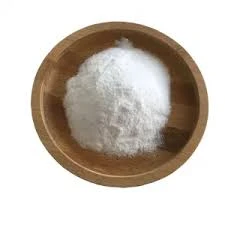Chemicals Used in Drinking Water Treatment
Drinking water treatment is a vital process that ensures the safety and quality of the water we consume. To achieve this, various chemicals are employed at different stages of treatment to remove contaminants, kill pathogens, and improve the overall aesthetic qualities of water (such as taste and odor). This article explores the commonly used chemicals in drinking water treatment, their functions, and the significance of maintaining safe drinking water standards.
Coagulants
One of the primary steps in water treatment is coagulation, which involves the addition of coagulants. Coagulants are chemicals that help to clump together small particles and impurities in water. Aluminum sulfate, commonly known as alum, is one of the most widely used coagulants. When added to water, alum reacts to form flocs, which are larger aggregates that can be easily removed through sedimentation and filtration. Other coagulants, such as ferric sulfate and polyaluminum chloride, may also be used depending on the specific water quality and treatment requirements.
Disinfectants
Disinfection is a crucial step in killing harmful microorganisms that could pose health risks. The most common disinfectant used in drinking water treatment is chlorine. It is potent, cost-effective, and provides residual disinfection, meaning it continues to act against pathogens as water travels through the distribution system. However, chlorine can react with organic materials in water to form disinfection by-products (DBPs), some of which are harmful. Therefore, alternative disinfectants such as ozone and ultraviolet (UV) light are increasingly utilized. Ozone is a powerful oxidizing agent, effective against bacteria and viruses, while UV light disrupts the DNA of pathogens, rendering them inactive without introducing any chemicals into the water.
pH Adjusters
Maintaining the appropriate pH level in drinking water is crucial for preventing corrosion of pipes and fixtures, as well as ensuring the effectiveness of disinfectants. Lime (calcium hydroxide) and sodium hydroxide are commonly used to raise the pH of acidic water, while sulfuric acid may be added to lower the pH of alkaline water. Correcting pH levels helps to protect both the infrastructure of water distribution systems and the health of consumers.
chemicals used in drinking water treatment

Flocculants
Following coagulation, flocculation is often employed to enhance the removal of suspended solids. Flocculants, such as cationic polymers, are added to encourage the formation of larger flocs, facilitating their settling. This process improves the efficiency of sedimentation and filtration, thus resulting in clearer water and reducing the load on subsequent treatment processes.
Algaecides
In water sources prone to algal blooms, the introduction of algaecides can help control algal growth and prevent contamination. Copper sulfate and sodium carbonate are examples of algaecides used to inhibit algae proliferation. However, careful consideration must be given to their usage, as excessive amounts can be toxic to aquatic life and may pose risks to human health.
Taste and Odor Controls
Chemicals such as activated carbon are employed to remove unpleasant tastes and odors from drinking water. Activated carbon adsorbs organic compounds responsible for bad taste and odor, improving the sensory qualities of the water. Additionally, potassium permanganate may be used to oxidize manganese and other minerals that contribute to unpleasant flavors.
Conclusion
The use of chemicals in drinking water treatment is a complex but essential part of ensuring safe and potable water for public consumption. Each chemical plays a specific role in addressing various contaminants, pathogens, and undesirable qualities in water. It is imperative that water treatment facilities adhere to regulatory standards and conduct regular monitoring to ensure the safety and quality of drinking water. As technology advances, ongoing research into alternative treatment methods and chemicals will continue to improve the efficacy and sustainability of water treatment processes, ultimately safeguarding public health and the environment.

